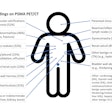|
Why are people abandoning my promotion? One of the most frequently asked questions we receive is, “How can I increase the click-through rate on my ads and e-mail broadcasts?” We’re usually quick to look at the intended audience demographics, the creative of the ads, or the offers involved. All of those are important, but something often overlooked is user goals versus marketing goals. Mismatched goals are the No. 1 reason why people abandon a Web site, according to Olivier Chaine, CEO of magnify 360, a behavioral targeting and marketing optimization company. He also stated that 97% of visitors were dissatisfied with their Web experience. One example that Chaine shared was about an online cookie company that saw a significant increase in conversion rate once it realized that users came to its site to buy cookies as gifts for others and not for themselves. Once this company identified its users' goals and changed its offers to reflect the customers' gifting intent, conversion rates rose. In another example, a technology company learned that when customers came to its site they were not looking for new product information, but heading instead straight to the product support area to download driver updates and patches. By redesigning its site to feature the product support area, customer satisfaction ratings improved significantly. User goals vs. marketing goals User goals are what your customers want to accomplish when they come to your Web site. They may include wanting to learn more about a product, download an update, or get customer support. When users can’t find a way to accomplish these goals, they abandon your site and are dissatisfied with the experience. Marketing goals are what we desire to have the customers do when they come to our Web site based on the ads, landing pages, and promotional offers we’ve created. This is often quite different than what customers want to do. When there is conflict between user goals and marketing goals, there is only one loser – your company. This problem is important because we are talking about people that have already clicked on your ad or e-mail, and now are looking to take a second step toward experiencing your product or brand. If you can increase the number of people who successfully complete this next step – filling out a contact form, downloading information, etc. – then you can dramatically increase the ROI on your marketing. It sounds like something we should all know intuitively, but in reality it’s an easy mistake to make. One company’s experience A while back, one company in the radiology industry experienced this in a dramatic way. Its stated marketing goal was to get people to sign up for a product demo at a tradeshow. The e-mail broadcast it sent had a great subject line that featured an incentive to download a free white paper. The e-mail itself highlighted the key benefits of the company's product, then invited people to download the paper from its site. The company included a link to sign up for the product demo, but it was not the primary focus of the mailing. This e-mail had very high open and click rates to the landing page. However, when users clicked to download the paper, they were taken to a product-focused landing page that featured links to sign up for the tradeshow product demo off to the side, but there were no links to download the promised white paper. The results were what you would expect. When the users were unable to find the white paper, they didn’t sign up for product demos – in fact they didn’t do anything at all. They simply abandoned the process. In the end, this company was disappointed with the results, despite having created an e-mail that had both open and click-through rates, because it didn’t meet its marketing goal of signing up people for the upcoming tradeshow demo. Five quick tips The lesson is this: You need to ensure that your marketing goals are tied into the e-mail subject line, e-mail broadcast, and landing page. If you offer something that competes with your goal or distracts from it, then your results will go down. Likewise, if you make an offer to people, ensure that you deliver on it, otherwise people may feel as if you tried to “bait and switch” them. Here are five quick tips that can help you avoid the same problem in your own marketing promotions:
Following these recommendations can help you increase your ROI and put you in the best possible position to achieve customer satisfaction. |
Mismatched Goals
Latest in Home
Bone-RADS improves accuracy for junior, attending physicans
October 17, 2025
PET/CT reveals ‘chemo brain’ regions in leukemia patients
October 16, 2025















